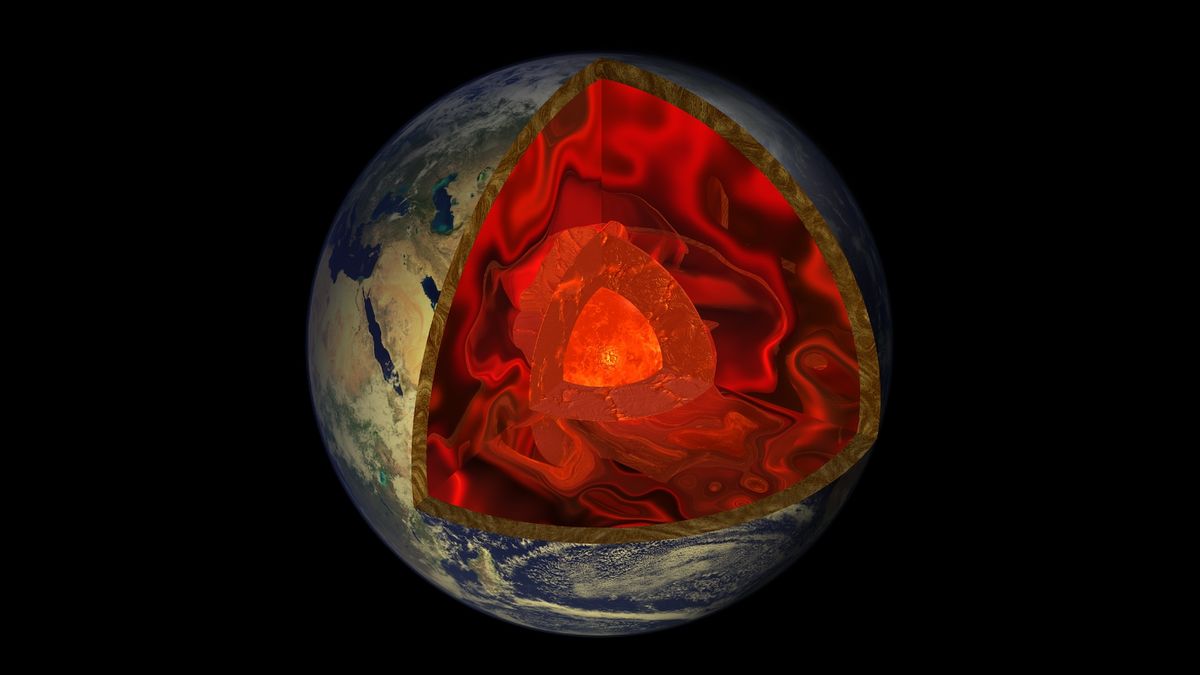
Mysterious zones in the deep mantle where earthquake waves slow to a crawl may actually be everywhere, new research finds.
Scientists already knew that ultra-low velocity zones (ULVZs), hover near hotspots — regions of the mantle where hot rock moves upward, forming volcanic island chains such as Hawaii. But mysterious earthquake waves suggest that these features might be widespread.
ULVZs, which are located in the lower mantle near the core-mantle boundary, can slow seismic waves by up to 50%. That's remarkable, said Michael Thorne, a geologist and geophysicist at the University of Utah.
"Here's one of the most extreme features that we see anywhere inside the planet," Thorne told Live Science. "And we don't know what they are, where they're coming from, what they're made of, [or] what role they play inside the Earth."
Thorne wasn't thinking of ULVZs when he launched the new research, published Aug. 10 in the journal AGU Advances. Instead, he was intrigued by another mantle mystery. Very large quakes, like those that occur at subduction zones where one tectonic plate slides under another, release powerful waves. Some of these so-called PKP waves travel through the mantle, the liquid outer core, and then the mantle again on their way to the opposite side of the planet from where they originated. These waves are sometimes preceded by another strange type of wave, called a precursor PKP wave.
Precursor PKP waves arrive before the main wave after scattering off mystery features in Earth's lower mantle. To identify these features, Thorne and his colleagues modeled PKP waves traveling through a computer model of Earth's mantle, into which they added areas that changed the waves' velocity. They found predictable patterns in how PKP waves varied in speed.
So the team hunted for similar patterns in real earthquake data. The researchers used data from 58 deep earthquakes with magnitudes over 5.8 near New Guinea that occurred between 2008 and 2022. Waves from these quakes traveled through the core and up to North America, where they were recorded by EarthScope, a project that deployed portable seismic monitors across the U.S. between 2003 and 2018.
The findings suggested that something was dramatically slowing the earthquake waves to scatter their energy, Thorne said. The two likely candidates were valleys and ridges along the core-mantle boundary where the waves traveled, or ULVZs. The core-mantle boundary under the western Pacific, where the waves passed, is thought to be smooth. But previous research found a large ULVZ under the western Pacific, east of the Philippines, overlapping the area studied.
And the researchers also found signatures of ULVZs when they looked elsewhere. The study found smaller patches of what seem to be more ULVZs under North America. And other research has found signs of ULVZs underneath North Africa, East Asia, Papua New Guinea and the Pacific Northwest, Thorne said.
Some researchers have theorized that ULVZs might be the remnants of giant impactors from Earth's early stage of meteor bombardment. However, if ULVZs are widespread, it suggests they're being actively generated today, Thorne said. He suspects that these zones may be areas of the volcanic rock basalt, formed at mid-ocean ridges where the seafloor spreads apart. When this mid-ocean basalt eventually gets pulled into the mantle by subduction, it melts easily and could form pockets where seismic waves slow. These pockets could then get pushed around the mantle by other slabs of subducting crust, which poke into Earth's interior like stirring sticks into a smoothie.
Better understanding these ULVZs could improve geologists' grasp of volcanic hotspots as well as how the mantle moves.
"There are a lot of open questions we don't have answers to yet," Thorne said.







